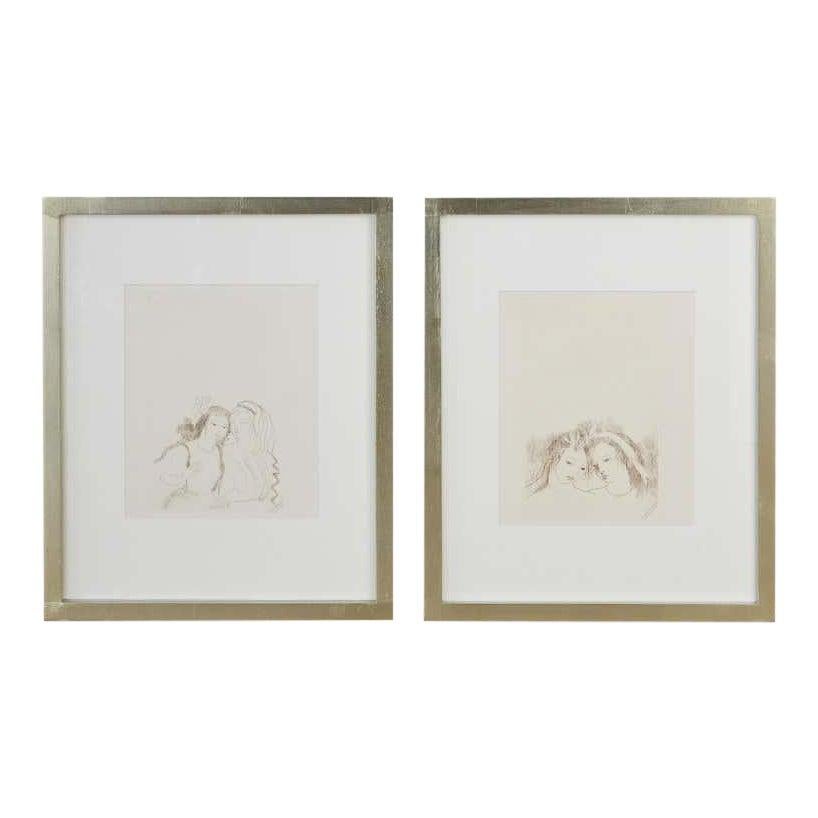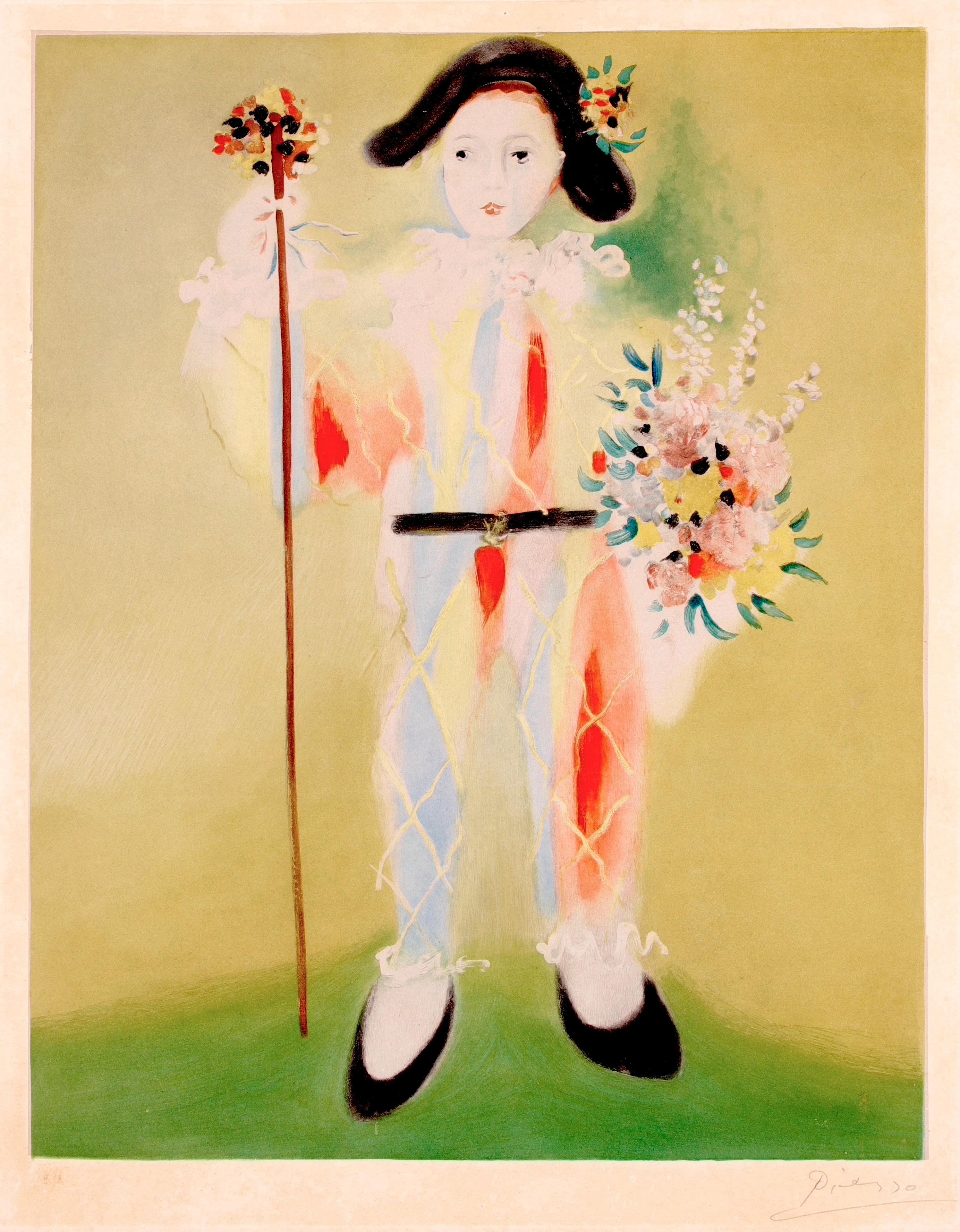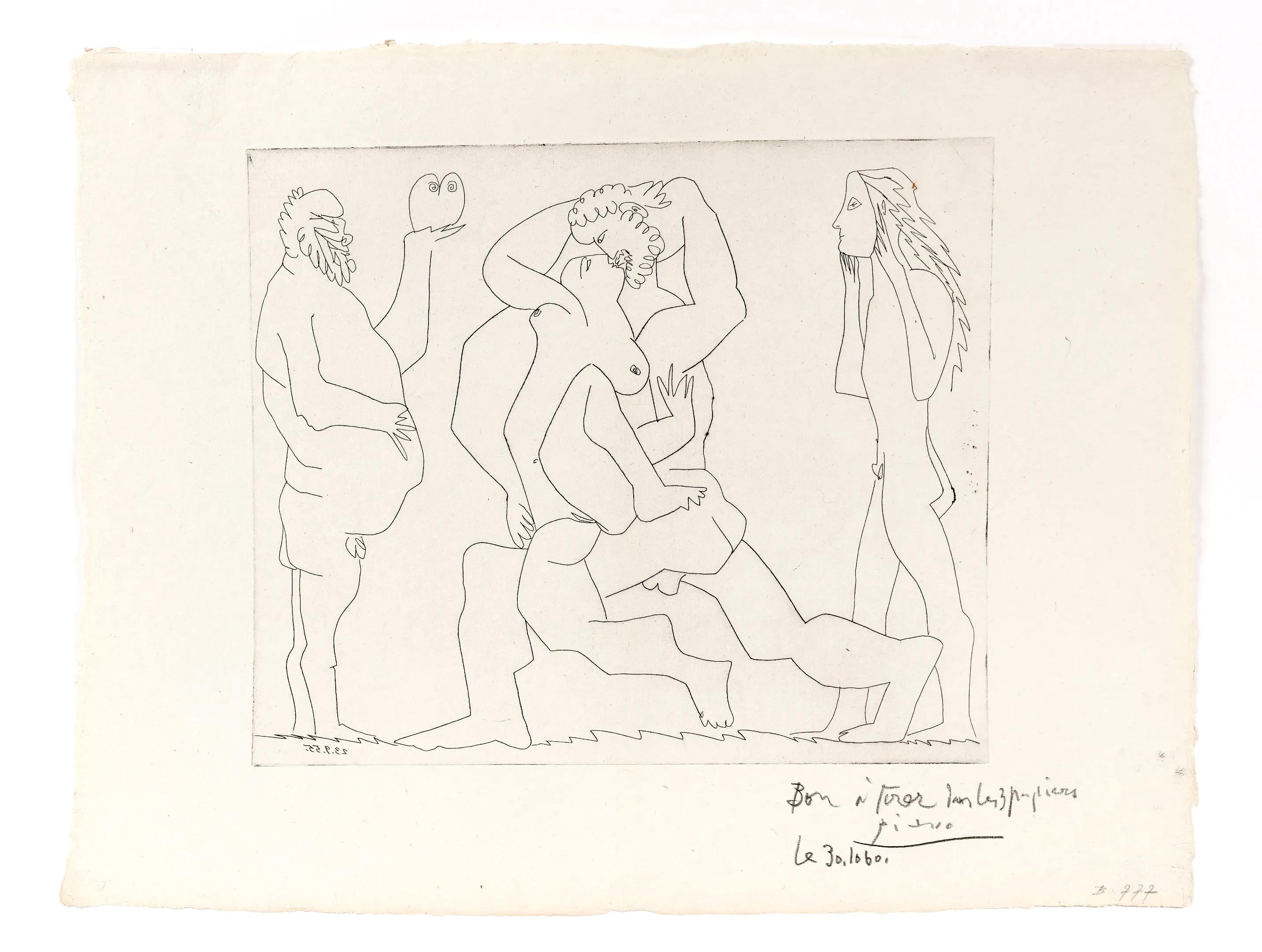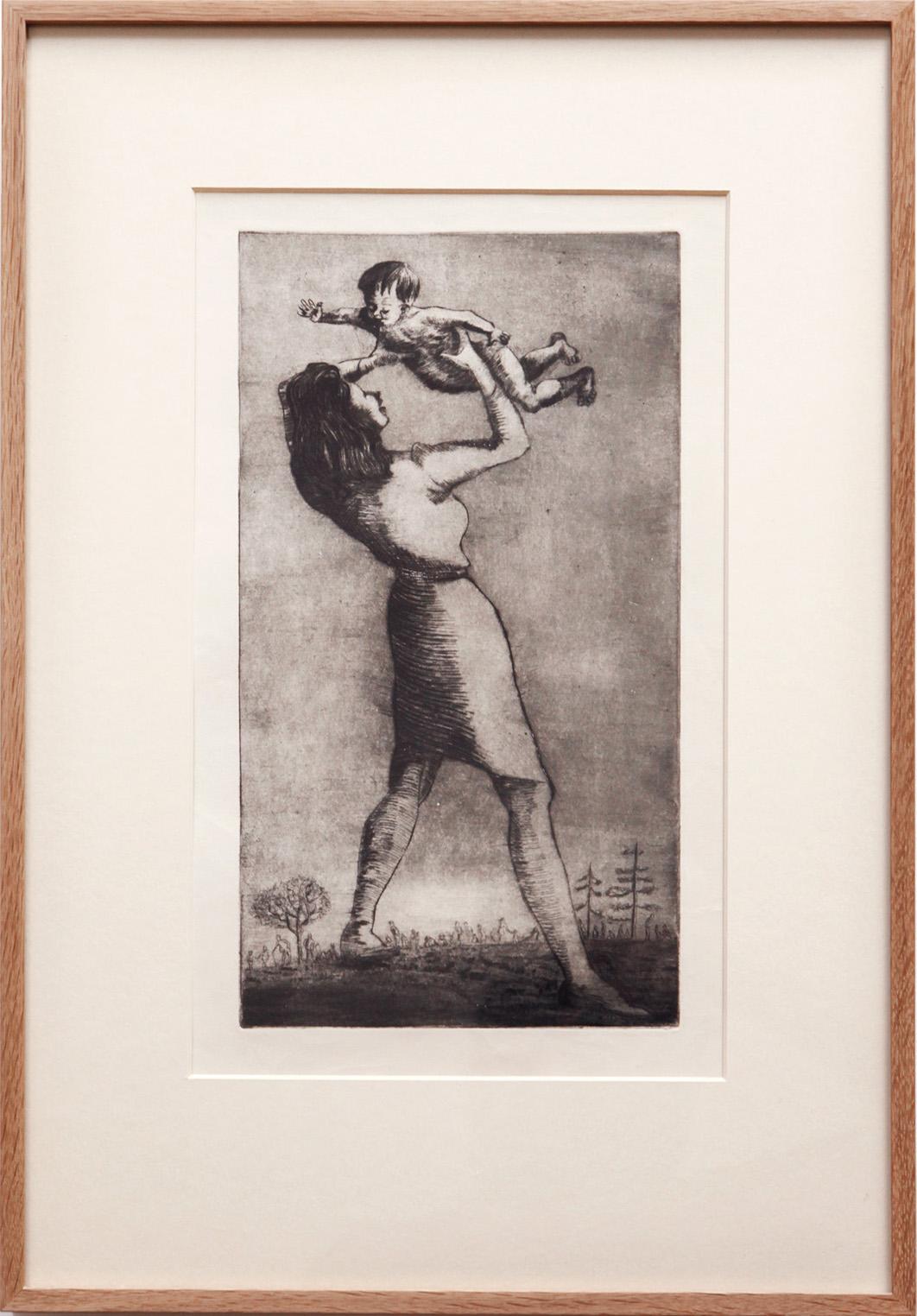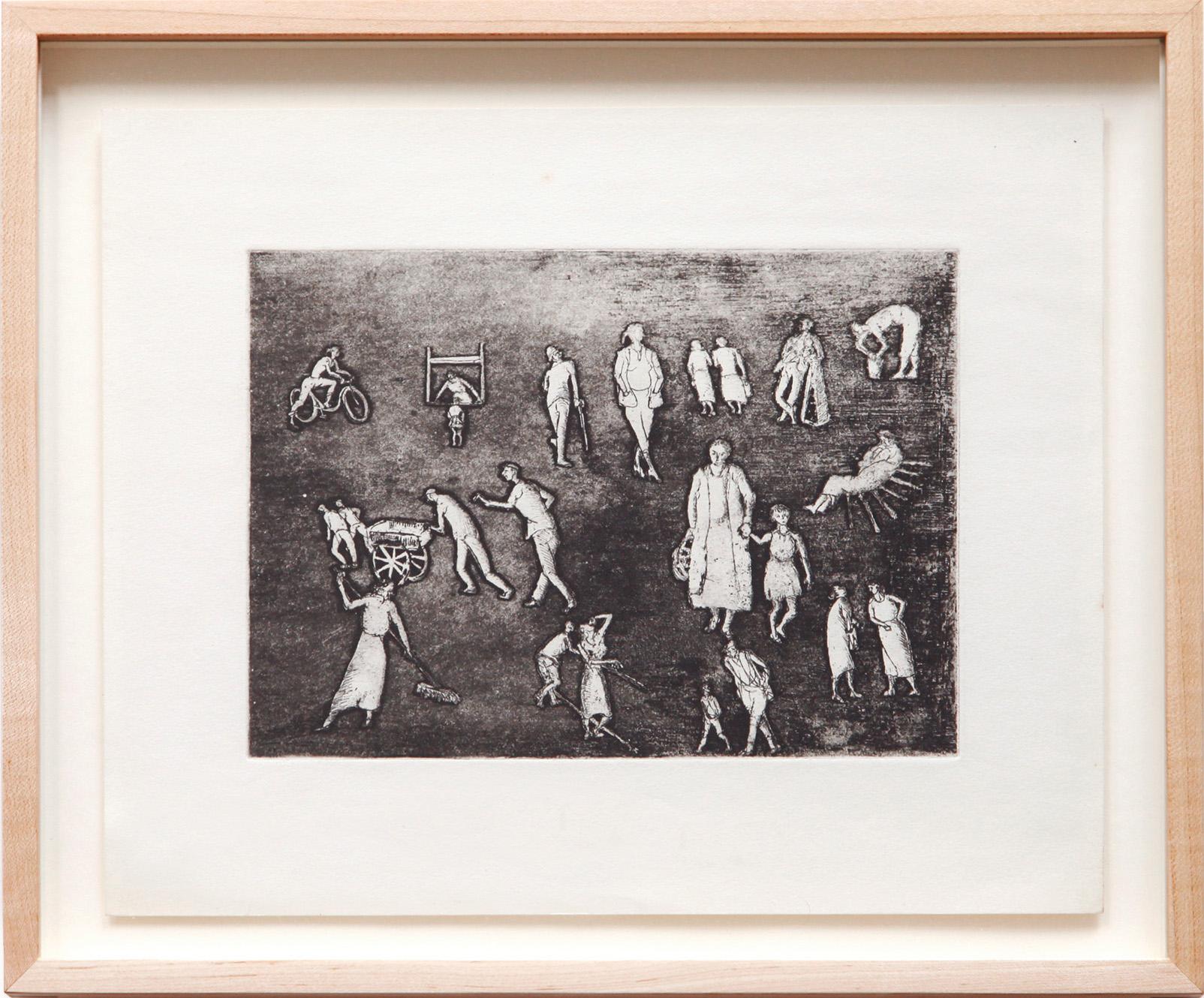Items Similar to Invitation to Your Excellency to the Exhibition of the last Artworks
Want more images or videos?
Request additional images or videos from the seller
1 of 2
Michel FingestenInvitation to Your Excellency to the Exhibition of the last ArtworksEarly 1900
Early 1900
About the Item
Image dimensions: 19x10 cm
Original rare Ex Libris by Michel Fingesten; includes passpartout. Hand signed in pencil.
Michel Fingesten
Michel Finkelstein, known as Fingesten, was born in 1884 in Buzkovice u Ostravy; he was a painter and engraver, who was famous particularly for his extraordinary production of Ex Libris (bookplates).
After studying at the Academy of Fine Arts in Vienna, and in Monaco with Franz von Stuck, who addressed him to the caricature and to the graphics of small size, Fingesten left Austria; he travelled all over the world, visiting Europe, the United States of America and the Oriental countries.
Fingesten’s stay in Berlin since 1913 was decisive for his contact with the world of the engraving. After his adhesion to the New Secession, Fingesten destroyed his previous pictorial production and he decided to dedicate himself to the dimension of the engraving; even if he preferred the graphics, he continued to see himself as a “painter”.
The German city was characterized by a very dynamic artistic atmosphere that stimulated Fingesten. The engravings of this artist were published since 1915 in files and books in limited edition.
Fingesten’s works were published also in the famous periodicals of the expressionist avant-garde, like “Genius” and “Marsyas”, with the artists and the writers most important of his age.
Considered as a genius of the Ex Libris, that became with him a big art of small size, Fingesten realised more over than 1.500 of these brands of property since 1915. Fingesten’s Ex Libris were nourishment for the bibliophiles, who glued the bookplates on the first page of theirs books to indicate the property and who traded these Ex Libris.
The Ex Libris is a genre that doesn’t have confines and that can’t be reduced to indicate the name of the owner on the book, on which it is glued.
It left his old function of simple heraldic sign of property, and it became almost the projection of the bibliophile’s personality.
Even if he didn’t fall in the eclecticism, Michel Fingesten used generously the medium of the quote, in the subject, in the form and in the style.
In the 20s, for example, his art oscillates between Otto Dix and George Grosz, of which he overcomes the social critique and the erotism, and Karl Arnold of which he beats the irony.
The Great Depression of 1929 and the rapid advance of the Nazism contributed in a significant way to the progressive isolation of the Czech painter and engraver.
In the spring of the 1935, Fingesten left Germany and went to Italy, where he settled in Trieste and Milan.
The collector Mantero remembers about Fingesten’s Italian stay that “he lived in a home without furnitures” in Via Chiaravalle 11.
Mantero, who was one of the most important Fingesten’s customers of Ex Libris, wrote: “I understood he had a difficult and poor life for absence of money, but he didn’t have ambition of a rich life, indeed he told me that the earnings to buy some bread and a glass of wine were enough for him”.
In that period, the main means of subsistence were the commissions of the collectors of Ex Libris, especially the collectors of Milan and Como, members of the circle of friends of the art merchant Luigi Filippo Bolaffio.
Also known as “Picasso of the Ex Libris”, Fingesten explored this artistic medium and he elevated it with new and powerful expressive resources.
When the Ex Libris was detached from its practical function, the Artist began to create Ex Libris also for fake customers, for “famous contemporary people”, poets, musicians, and since 1928, for political men.
The Ex Libris, realised with a lot of graphic techniques, like the etching, the drypoint and the lithography, has always (with the graphics of occasion) the signature of the Artist, that underlines the awareness of his valour.
An important chapter of the production of this Artist was dedicated to the erotic Ex Libris, that for their irony were understood with difficulty by people that didn’t belong to the circle of the Artist.
Some of the most secret and rare erotic works by Fingesten are linked to the commissions of Gianni Mantero.
The dominant element of these engravings is the sarcasm, that is sometimes connected to a gloomy irony, and to the presence of the death, that coincided with the war, particularly in the last years of the Artist existence.
In his compositions, Fingesten was a narrator of life and death, of sex and love, of nightmares, hopes, art and poetry. His narration wasn’t without the time and the space, but it was at the center of the contemporary dimension, in the 20s and 30s of the anguished Europe that was going to the ruin.
We can underline that the relationship between the Artist and the customer had an important role in the definition of the power of these graphic works; actually the creative energy, that was born from the contact between the Artist inspiration and the customer personality, generates a strong expressive freedom.
After his death, Michel Fingesten and his works were forgotten; today there is a new attention to this very important artist and to his visionary sign.
Bibliography
• N. Nechwatal, Michel Fingesten – Das graphische Werk, Coburg 1984
• A. Tomasetig, Michel Fingesten: dalla collezione Cauti una mostra di ex libris e grafica d’occasione, 2005
• A. Parik, The unknown Michel Fingesten, Praha 2008
This artwork is shipped from Italy. Under existing legislation, any artwork in Italy created over 70 years ago by an artist who has died requires a licence for export regardless of the work’s market price. The shipping may require additional handling days to require the licence according to the final destination of the artwork.
- Creator:Michel Fingesten (1884 - 1943, Italian)
- Creation Year:Early 1900
- Dimensions:Height: 11.82 in (30 cm)Width: 9.45 in (24 cm)Depth: 0.04 in (1 mm)
- Medium:
- Movement & Style:
- Period:
- Condition:Insurance may be requested by customers as additional service, contact us for more information.
- Gallery Location:Roma, IT
- Reference Number:
About the Seller
4.9
Platinum Seller
These expertly vetted sellers are 1stDibs' most experienced sellers and are rated highest by our customers.
1stDibs seller since 2017
6,713 sales on 1stDibs
Typical response time: 2 hours
- ShippingRetrieving quote...Ships From: Rome, Italy
- Return PolicyA return for this item may be initiated within 14 days of delivery.
More From This SellerView All
- Monte di Pieta e banco Pubblico - Etching by Giuseppe Vasi - 18th centuryBy Giuseppe VasiLocated in Roma, ITMonte di Pieta e banco Pubblico is an original etching of the Late 18th century realized by Giuseppe Vasi. Signed and titled on plate lower margin. Good conditions. Giuseppe Vasi...Category
18th Century Modern Figurative Prints
MaterialsEtching
- The River By Meadow - Original Etching by Amadée Feau - 1921Located in Roma, ITThe River By Meadow is an original etching artwork on creamy-colored paper realized by French artist Amadée Feau (1872-1952) in 1921. Signed on the plate on the lower right and date...Category
1920s Modern Landscape Prints
MaterialsEtching
- The Ballerina - Original B/W Etching by Auguste Legrand - 1900sBy Auguste LegrandLocated in Roma, ITThe Ballerina is a black and white etching realized by Auguste Legrand (French artist active between 1825 and 1860). In very good conditions. This modern artwork represents a balle...Category
Early 1900s Modern Figurative Prints
MaterialsEtching
- The Shandy Bath - Original Etching by Raphael Drouart - Early 20th centuryLocated in Roma, ITThe Shandy Bath is an Original Etching realized in the Early 20th Century by Raphael Drouart (1884-1972). The artwork is in good conditions. The artwork represents a poetic mystic ...Category
Early 20th Century Modern Figurative Prints
MaterialsEtching
- Eros and Thanatos - Original Etching by Sergio Barletta - 1970sBy Sergio BarlettaLocated in Roma, ITEros and Thanatos is an Original Etching realized by Sergio Barletta in the Early 1970s. Good conditions. Hand-signed. Numbered. Edition, 99/160 The artwork is depicted through ...Category
1970s Modern Figurative Prints
MaterialsEtching
- The Shandy Bath - Etching by Raphael Drouart - Early 20th centuryLocated in Roma, ITThe Shandy Bath is an Original Etching realized in the Early 20th Century by Raphael Drouart (1884-1972). The artwork is in good conditions Titled on the rear. The artwork represe...Category
Early 20th Century Modern Figurative Prints
MaterialsEtching
You May Also Like
- "Two Women" Pair EtchingsBy Marie LaurencinLocated in Rio Vista, CAElegant pair of etchings by Marie Laurencin (French 1883-1956) from the "Poemes de Sapho" published in 1950 ref. 273. Each beautifully mounted in fram...Category
20th Century Modern Portrait Prints
MaterialsEtching
- Le Petit Pierrot aux FleursBy (after) Pablo PicassoLocated in ZEIST, UTPablo Picasso (d’Apres)– Le Petit Pierrot aux Fleurs Color Aquatint on Chine Collé on Japan paper support, ca. 1960 Hand signed in pencil, lower right...Category
1960s Modern Figurative Prints
MaterialsEtching
- Bacchanal with Owl and Young Man in a MaskBy Pablo PicassoLocated in ZEIST, UTPablo Picasso- Bacchanal with Owl and Young Man in a Mask Medium Etching on old laid wove paper. Printer & Publisher: Printed by Jacques Frélaut, 1955 Published by Galerie Louise Le...Category
20th Century Modern Figurative Prints
MaterialsEtching
- 'Londoners' 1940s Etchings - LoveLocated in London, GBThree etchings representing the cycle of love, from Péri’s observations of people on the streets of London. These small prints were intended to be sold in groups as folding booklets, like postcards. Artist: Peter László Péri...Category
1940s Modern Figurative Prints
MaterialsEtching
- Mother and ChildLocated in London, GBA beautiful and touching original Peter László Péri etching, 1940s. A beaming mother of gigantic proportions holds her child above her head. At her f...Category
1940s Modern Figurative Prints
MaterialsEtching, Paper
- 'Londoners' 1940s EtchingLocated in London, GBA beautiful etching from Péri’s observations of people on the streets of London. Artist: Peter László Péri Date: 1940s Framed size: 26.5cm x 32cm M...Category
1940s Modern Figurative Prints
MaterialsEtching
Recently Viewed
View AllMore Ways To Browse
American Depression Glass
Mens Gianni
Beats Antique
Fine Karl Springer
Dior Wine Glasses
Antique German Wine Glasses
Picasso Erotic Art
Picasso Drypoint
Lot Of Antique Books
Antique Resources
Antique Italian Wine Glasses
Antique Bookplate
Antique Bookplates
Orange Circle Antique
Picasso Drypoint Etching
Dior Sex And City
Dior Sex And The City
Sex And The City Dior
